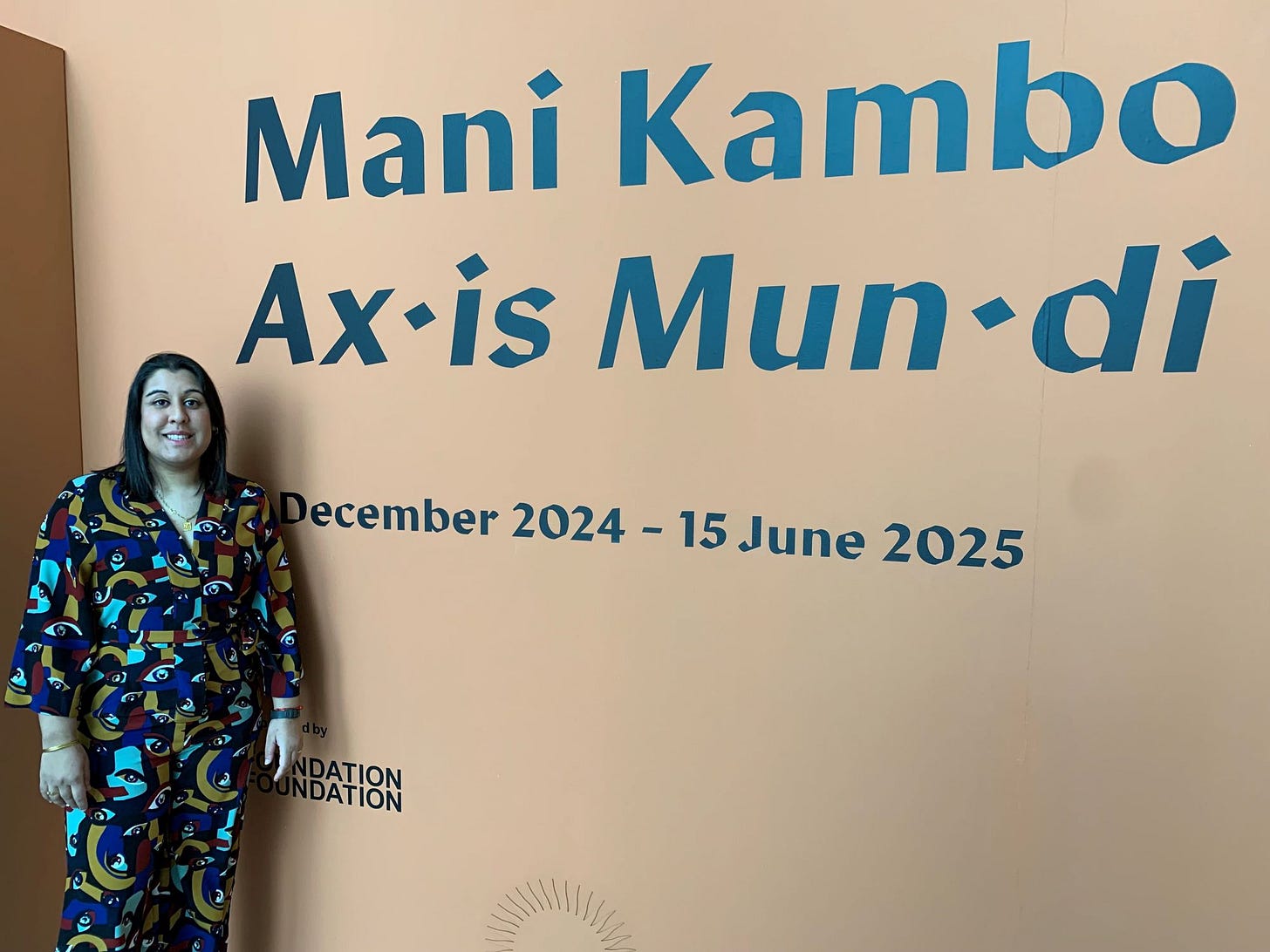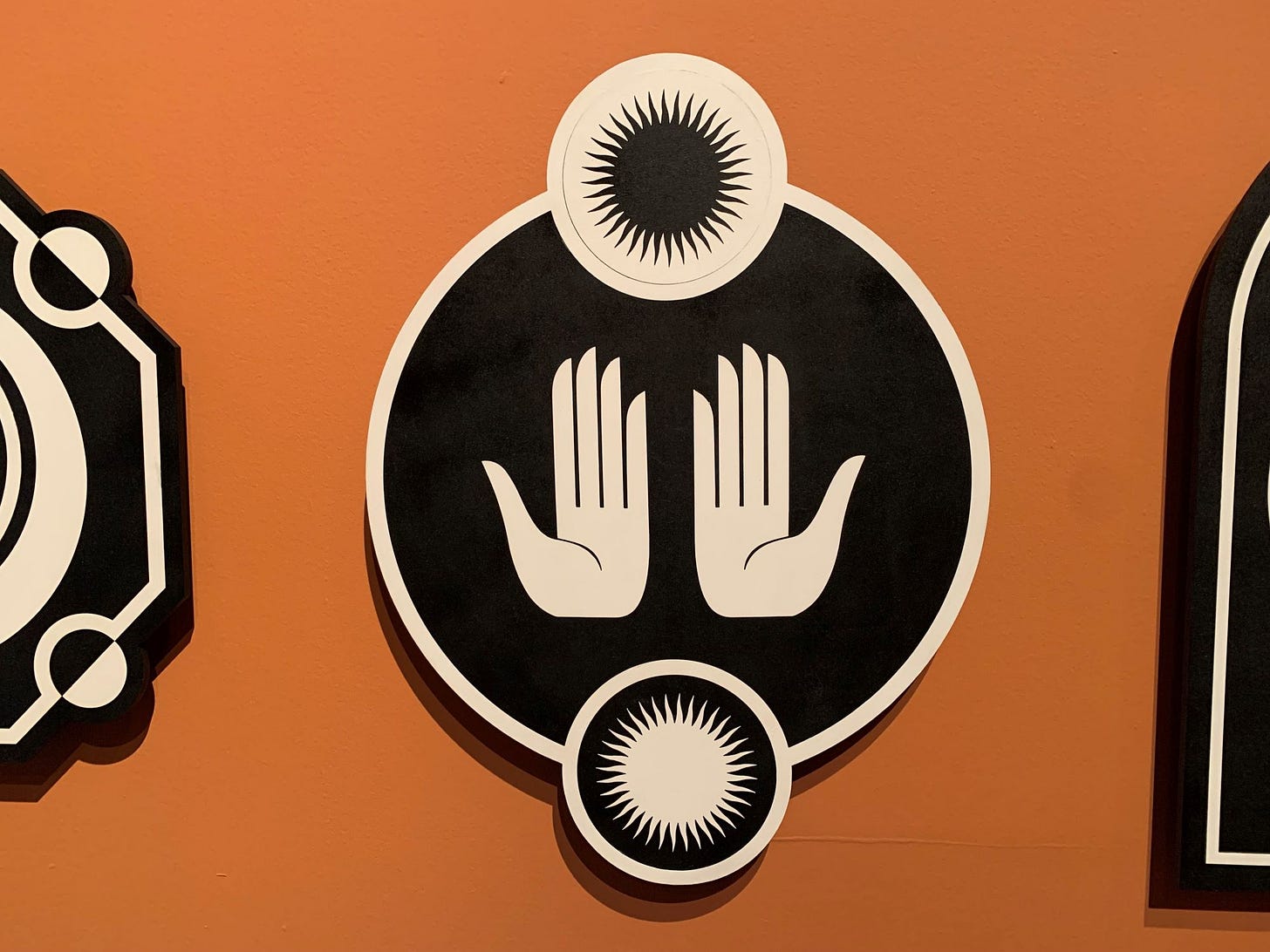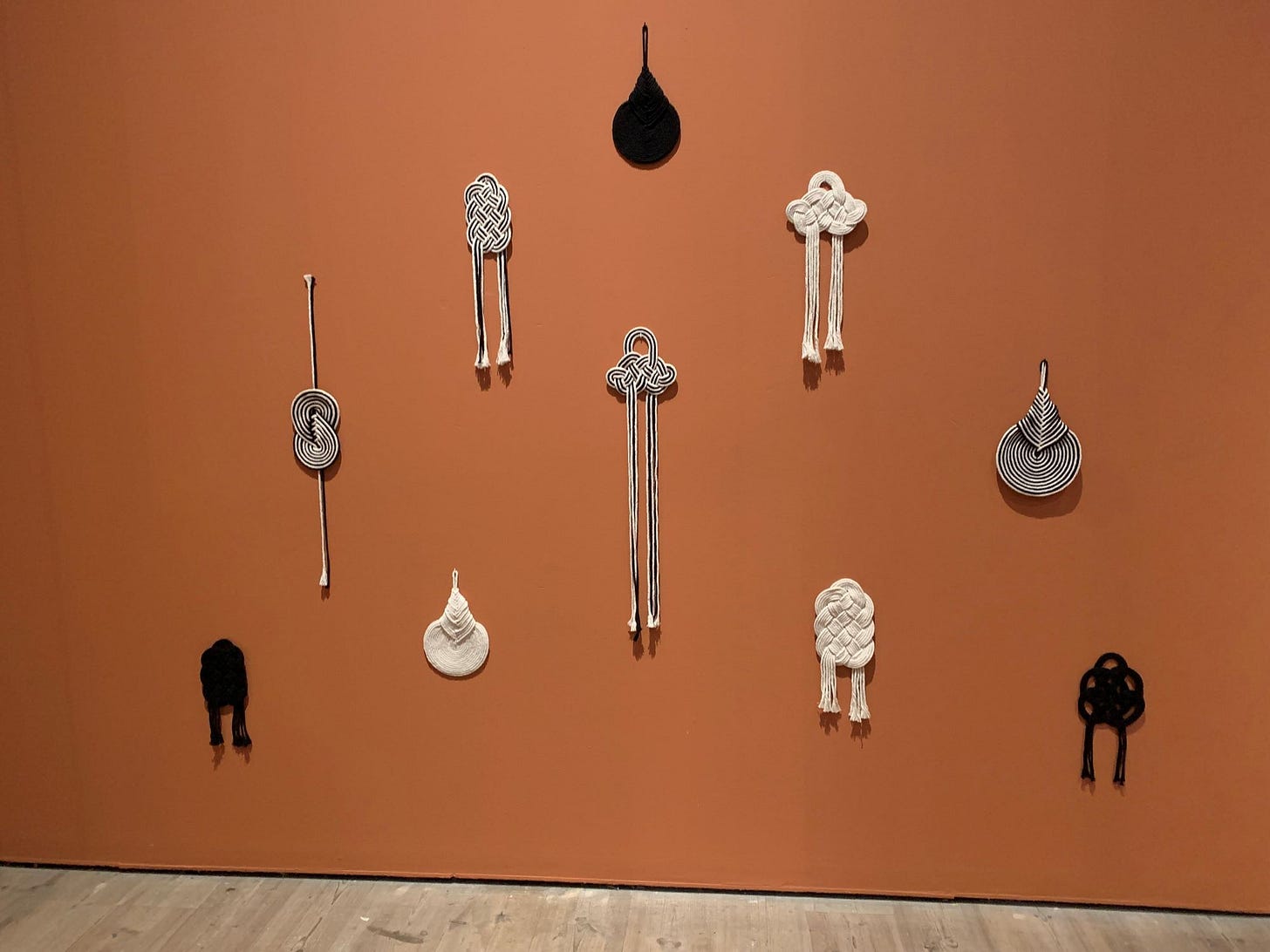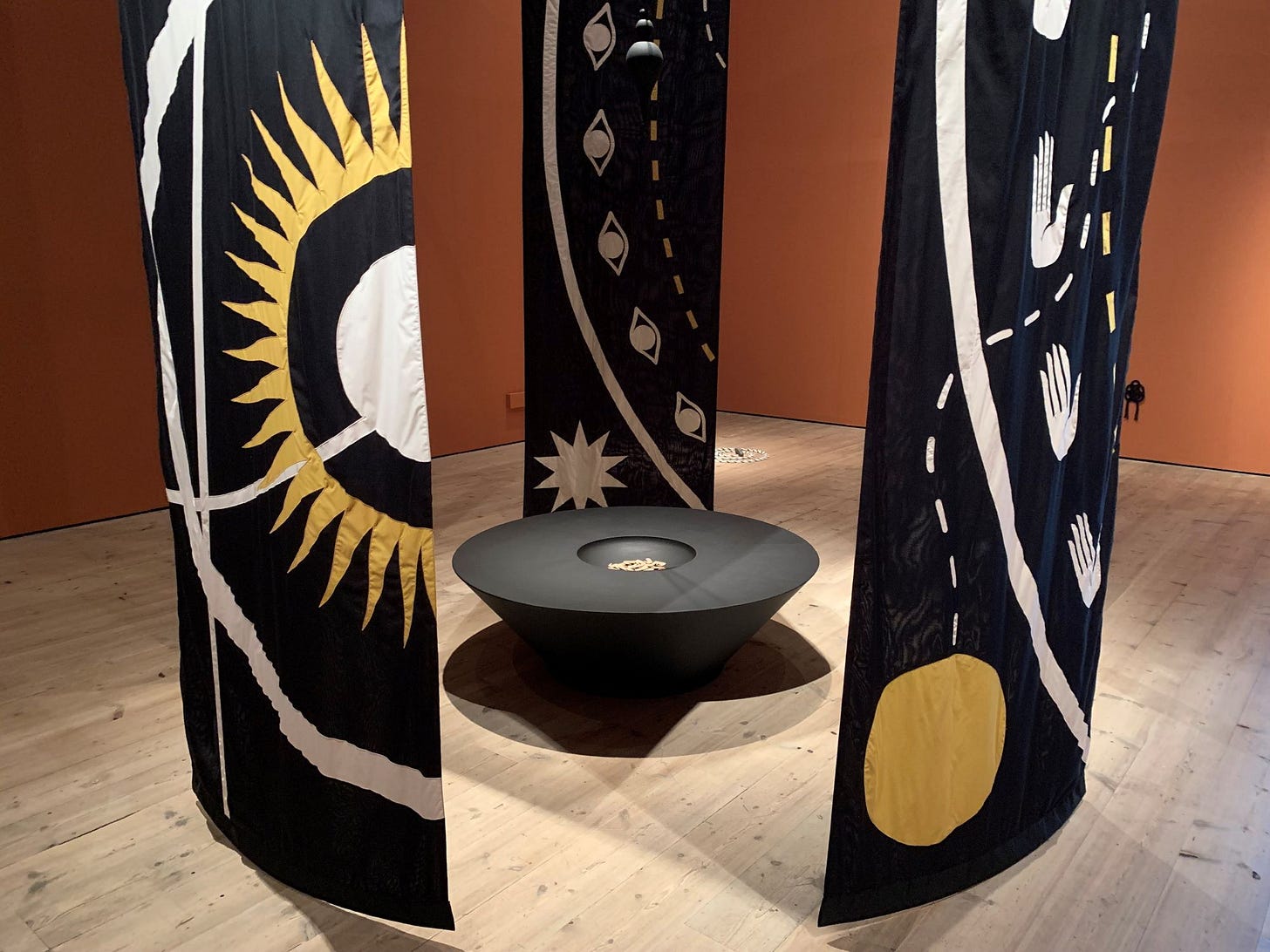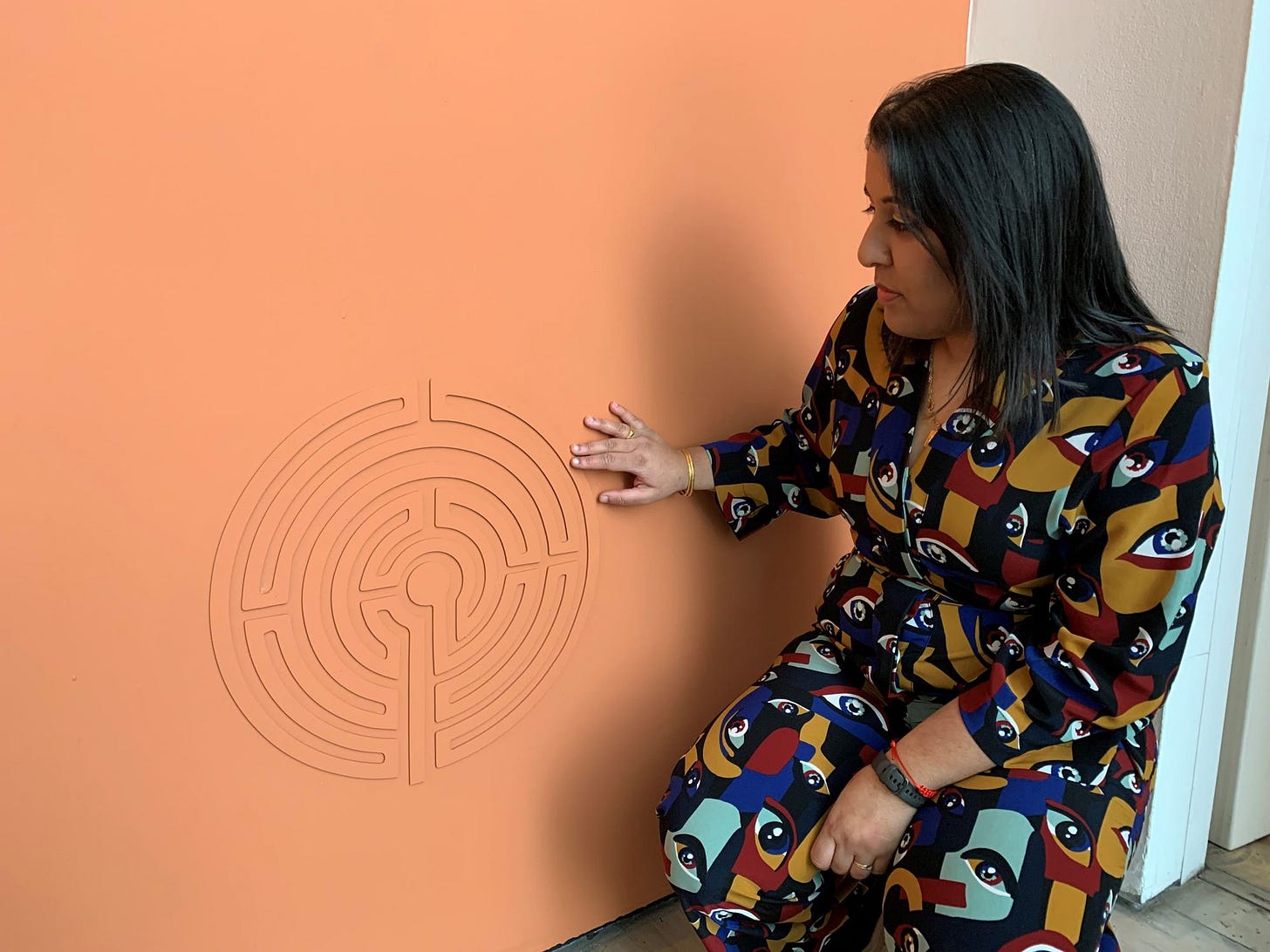Exhibition: Mani Kambo - Ax·is Mun·di
Mani Kambo, whose Baltic exhibition invites visitors to ‘the centre of the Earth’, tells David Whetstone about her artistic journey
A peal of laughter is the response to my question to Mani Kambo about when she decided to become an artist.
Some artists will tell you there was nothing else they were ever going to be or could be. But Mani, who was born in Newcastle and grew up in Gosforth, seems very surprised by the way things have turned out.
Surprised and delighted, since we are talking as her biggest exhibition so far is about to open in the region’s most prominent gallery, Baltic Centre for Contemporary Art.
“Goodness! To be honest, I think I got there quite late. At school I did art, media studies and sociology and I remember being told don’t do art because you’ll never get a job.
“But I carried on, did a foundation degree at Newcastle College and then a top up final year at Northumbria University, which was great.
“Then I was like, what do artists do?
“Back then they had a thing called the graduate studio at Northumbria which meant you could stay on for another year. It allowed access to studio space and other facilities, and it gave me a chance to figure out how to be an artist.
“But I also worked part-time at a cinema and in a bakery, doing normal jobs to pay the bills while at the same time building up my art practice.
“I did little shows and continued building, eventually getting asked to do little commissions and take part in exhibitions, and it wasn’t until I’d done a few of those that I thought, I really want to do this. How do I continue?”
You have to assume she found the answer because here she is, potentially on the threshold of the big time, relieved, smiling and taking refreshing sips from a glass of Irn Bru.
“This is absolutely huge in regard to my career and practice,” she says.
“In the production of the work I’ve had really knowledgeable individuals helping to make stuff and saying, could you do this, or have you ever thought about that?
“There have been curatorial and technical conversations, and exposure to different ways of making work… it’s been huge.”
For regular Baltic visitors, this exhibition might jog a memory. Some of Mani’s painted artworks, strikingly black and white, featured in a group exhibition called Hinterlands in 2022.
There were more on display in January at Newcastle Arts Centre in another group show, this time wall-mounted textiles but with the same eye-catching symbols, like hieroglyphs – circles, dots, serpents, hands.
Where do they come from? What do they mean?
They’re questions we’re bound to ask. As a species we communicate, whether overtly or covertly, using symbols.
Those questions arise again here in the exhibition Axis Mundi, each of the two words broken up by a symbol which is beyond the scope of my (limited) keyboard knowledge.
This is the artistic language of Mani Kambo writ large with five giant textile hangings suspended in a circle from the high ceiling of Level 2’s cube-like gallery space.
Embellished with swirls and symbols in white and gold, they encircle a big black dish filled with tiny cut-out hands and around them, on the walls, are wooden pieces and knotted pieces, all beautifully made yet mysterious.
It’s like walking into a place of worship, or maybe the studio of an early astronomer or mathematician. Masonic lodges spring to mind – not that I’ve been in one – and The Sorcerer’s Apprentice, that age-old tale.
Not for the first time, Mani laughs off suggestions that the predominant black and white denote any particular football allegiance.
She says her Indian and Sikh heritage helped to instil an interest in motifs and symbols. The serpent, she’ll tell you, represents the beginning and end, while a dot, in South Asian culture, is often worn for protection.
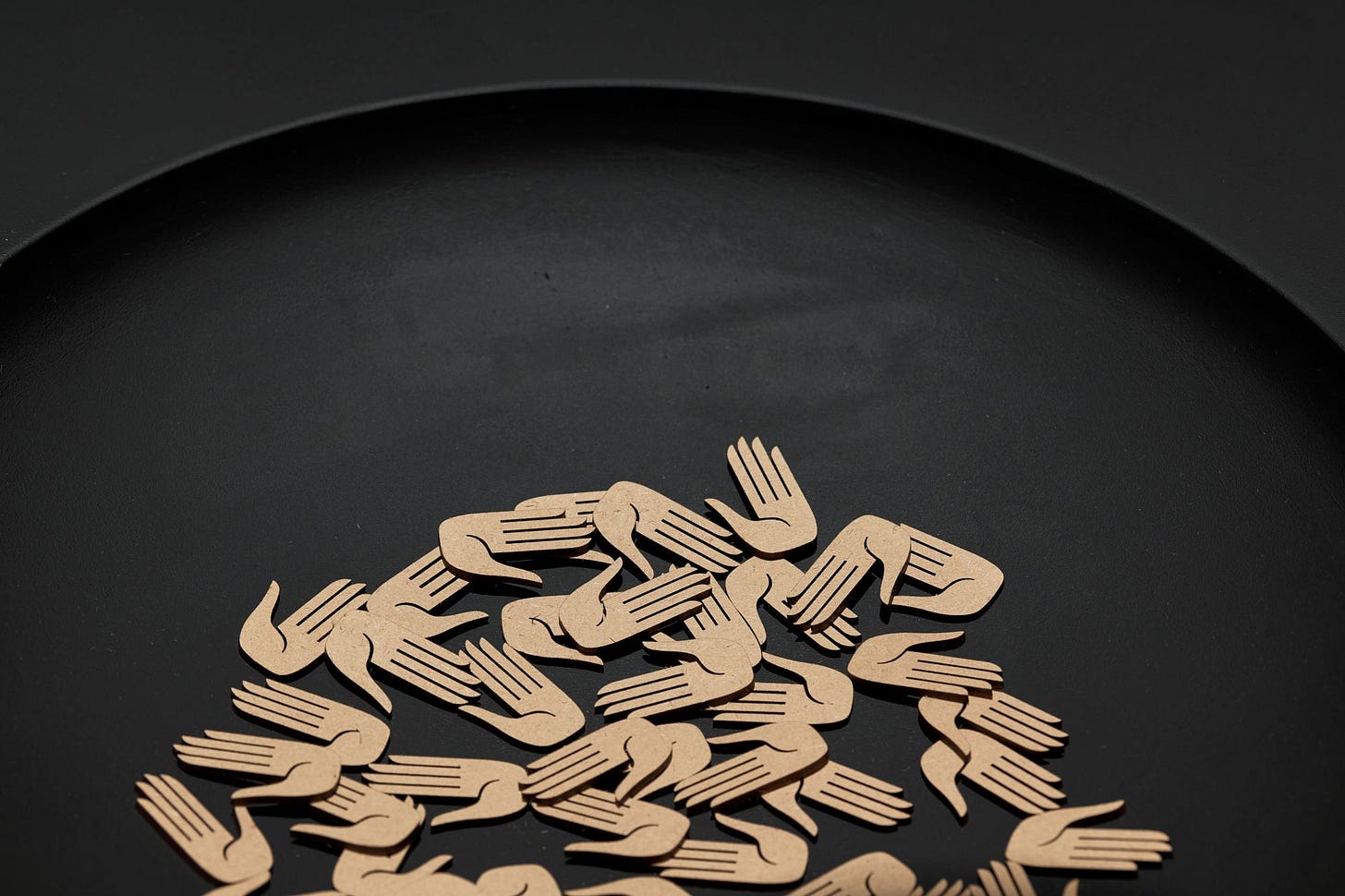
But while there’s “a little nod” to all that, this exhibition is not specifically about any of it.
“It’s more about me understanding the world and what’s around it. It’s a view through my own lens but using markers that relate to myself.
“I’m not religious. I’m more interested in the connectivity between humans than organised religion.
“As you enter this space, it’s meant to have an energy and a vibe to it. It’s to do with the idea of thresholds, pathways, portals and spaces.
“And I put a rock above the entrance like a good luck object protecting you on your journey, as if you’ve entered a new space or realm.”
You’ll see other little rocks inside, each decorated with a symbol. They were “locally sourced”, says Mani but laughingly declines to say exactly where from.
All rocks, she stresses, are firmly fixed, including the one above the entrance. If it fell on someone’s head, it would rather defeat the object.
The title Axis Mundi came to her midway through the residency which preceded the exhibition. It’s a widely used Latin phrase meaning the centre of the world or, in mythology, the place where Earth, Heaven and the underworld meet.
“It’s about the idea of the connectivity of everything and particularly the lower and upper realms and the transfer of energy,” says Mani.
“It’s a bit like Dante’s Inferno with all those levels. I’m very interested in layering.”
Stretching ceiling to floor is the longest exhibit, an exquisitely knotted rope that ends in a coil with a rock standing guard.
While most of the stuff in the exhibition was made in her Baltic studio, this piece, she admits, she did at home where she could have a film or podcast running in the background.
“It’s quite a calming artistic process but after a while your hands start to hurt and you need a break.”
She hopes people will notice the symbols on the outer wall of the gallery, designed to draw them inside, and that they’ll take away one of the little hands, thereby spreading the exhibition’s influence far and wide.
And if those rocks represent the underworld, look across the Tyne and you might see the big Mani Kambo flag flying high in the heavens above Newcastle Castle.
Delighted by the opportunity to exhibit at Baltic, Mani says: “A lot of my exhibitions have been in the North East which I quite like.
“I don’t think you need to go to London. It’s good to see this area growing as a cultural hub with so many artists and creative organisations, so it’s about pushing those and making the most of this region’s opportunities.”
Unlike those little hands, it seems she’s staying put.
Alexis Mundi, by Mani Kambo, is at Baltic until June 15, 2025. Visit the website for more information.



